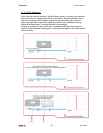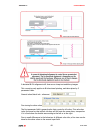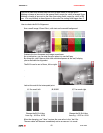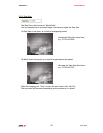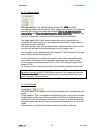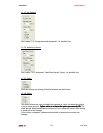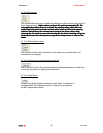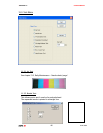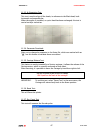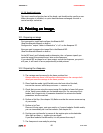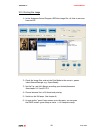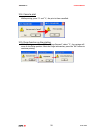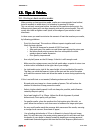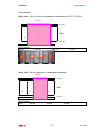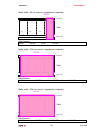
:ANAPURNA XL² OPERATOR MANUAL
AB]]]]]]]]]]]]]]]]]]]]]]]]]]]]]]]]]]]]]]]]]]]]]]]]]]]]]]]]]]]]]]]]]]]]]]]]]]]]]]]]]]]]]]]]]]]]]]]]]]]]]]]]]]]]]]]]]]]]]]]]]]]]]]]]]]]]]]]]]]]]]]]]]]]]]]]]]]]]]]]]]]]]]]]]]]]]]]]]]]]]]]]]]]]]]]]]]]]]]]]]]]]]]]]]]]]]]]]]]]]]]]]]]]]]
51
]
8/08/2008
]
13
1313
13.
. .
. Tips & Tricks
Tips & TricksTips & Tricks
Tips & Tricks.
..
.
13.1. Printing on heat sensitive media:
When printing on heat sensitive media, media can come upwards (head strikes)
but also expands in width when it is heated up by passing UV-lamps.
This can not only cause head strikes, but due to the expansion during print, the
different print passes will not align properly with earlier printed passes. This will
mostly be visible as lighter zones (spots) at the edges of your media (in both
directions).
In these cases you need to minimize the amount of heat that reaches your media,
by following guidelines:
- Print Uni-directional. This works on different aspects together and is most
likely the best solution:
o The left UV-lamp can be turned off (50% less heat)
o After each pass, the media can cool down again during the return pass
o No bidirectional printing means also less susceptible to visible
artefacts due to media expansion.
o Print Quality improvement
- Use only half power on the UV-lamps, if the ink is still enough cured.
- Make sure the carriage moves over the left media edge, on point of return (use
a white trailer in Wasatch at the right side of your image).
- for rigid media: put a rigid of the same height in front and behind the media;
That way you avoid that open air holes at the start and the end of the plate
will make the vacuum lower and allow the media to move during expansion by
heat.
If this is not sufficient or not wanted, following actions can be done:
- Rip and print your image in a lower number of passes; This will reduce the
number of times that a lamp passes the media.
- Select a higher shuttle speed; It will not always be possible, and influences
certainly the print quality.
- Set a head height of 2 to 2.5mm. (Adjust the Bi-dir alignment if printed
bidirectional); Print quality will get lower.
- For smaller media : place the media at the 2nd register pins (left side), so
you’ll allow the surface to cool down more in between the longer print pass.
- On very small media: mask the conveyor belt area around the media, ensuring
a stronger local vacuum. (Use sheets of paper) .
- Use a leading white border of 15 cm in Wasatch in front of the real image
data. This will take you a few extra printing passes but this will take care that
the border of your media is already heated up steadily per moving pass and
conditioned (extended) against the time that the first drops are jetted onto it.



